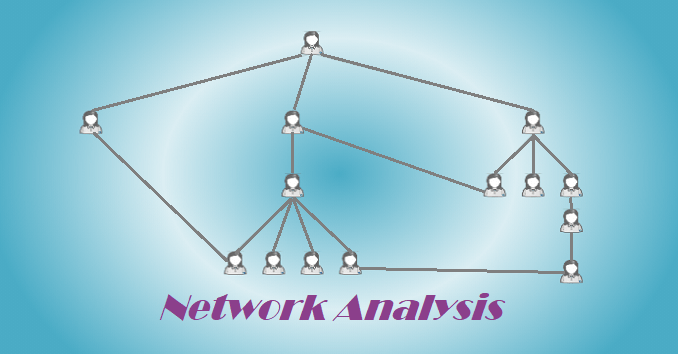
Introduction of Network Analysis
♦ Project:
A Project such as setting up of a new plant, research and development in an organization, development of a new product, marketing of a product etc. is a combination of interrelated activities (tasks) which must be executed in a certain order before the entire task can be completed.
♦ Activity (Task):
The activities are interrelated in a logical sequence in such a way that the same activities can not start until some others are completed. An activity in a project is usually viewed as a job requiring resources for its completion. The objectives of project management can be described in terms of a successful project which has been finished on time, within the budgeted cost and to technical specifications and to the satisfaction level of end-users. Normally for any project, one may be interested in answering questions such as
i) What will be the expected time of project completion?
ii) What is the effect of delay of any activity on the overall completion of a project?
iii) How to reduce the time to perform certain activities in case of the availability of additional funds?
iv) What is the probability of completion of the project in time?
♦ Network Analysis:
Network analysis refers to the OR techniques used for planning, scheduling, and controlling large and complex projects. A network is a graphical representation consisting of a specific configuration of arrows and nodes that depicts the logical sequence of various tasks that must be completed in order to achieve the project objectives. Hence, a set of nodes connected by edges is defined as a network, where something flows along the edges.
In other words, Network analysis is the certain specific techniques which can be used for the planning, management and control of projects. Projects are divided into individual tasks or activities that are organized in a logical order. It is also decided which tasks will be completed simultaneously and which will be completed sequentially.
That is, a Network is a technique used for planning and scheduling large projects in the fields of construction, maintenance, fabrication, purchasing, computer system instantiation, research and development planning etc. The human nervous system, genealogical chart, a system of highways, etc. are also examples of networks.
In other words, Network analysis helps in design, planning, coordination, control and decision making to complete the project economically in minimum available time with limited available resources. Pure work analysis serves the purpose of reducing total time, cost, idle resources, interruptions and conflicts.
The managerial applications of network analysis are as follows:
- Assembly Line Scheduling,
- Research and Development,
- Inventory Planning and Control,
- Shifting of manufacturing plant from one plant to another,
- Launch of new products and advertising campaigns,
- Developing long-range planning and staffing plans, etc.
Nowadays we use CPM (Critical Path Method) and PERT (Project Evaluation & Review Technique) as technical tools for planning, scheduling and controlling stages of projects.
Commonly used project management techniques are:
- Critical Path Method (CPM) and
- Project Evaluation and Review Technique (PERT)
Several network technologies as given below have been developed in recent times:
- Resource Allocation and Multi-Project Scheduling (RAMS)
- Program Evolution Process (PEP)
- Critical Operating Production Allocation Control (COPAC)
- Manpower Allocation Process (MAP)
- Resource Planning and Scheduling Method (RPSM)
- Least Cost Selection (LCS)
- Multi-Operation Scheduling System (MOSS)
- Project Control System (PCS)
- Graphical Evaluation Review Technique (GERT)
(Source – Various books of college library)
Copyrighted Material © 2019 - 2024 Prinsli.com - All rights reserved
All content on this website is copyrighted. It is prohibited to copy, publish or distribute the content and images of this website through any website, book, newspaper, software, videos, YouTube Channel or any other medium without written permission. You are not authorized to alter, obscure or remove any proprietary information, copyright or logo from this Website in any way. If any of these rules are violated, it will be strongly protested and legal action will be taken.





Hello Ma. I want to cite your article “introduction of network analysis” in my research, but I did not see the year of the publication. Please can you help me with the year?